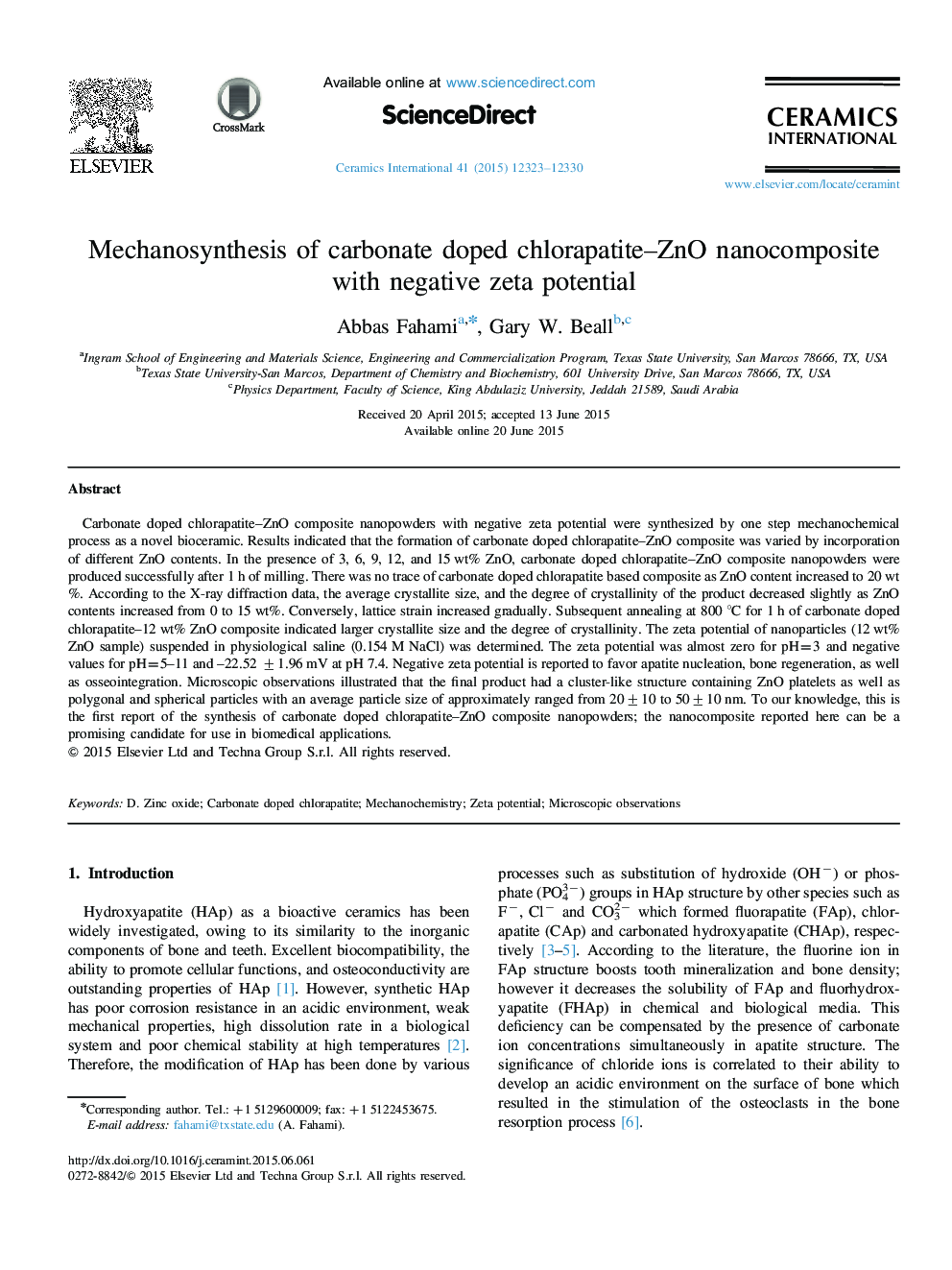| Article ID | Journal | Published Year | Pages | File Type |
|---|---|---|---|---|
| 1459979 | Ceramics International | 2015 | 8 Pages |
Carbonate doped chlorapatite–ZnO composite nanopowders with negative zeta potential were synthesized by one step mechanochemical process as a novel bioceramic. Results indicated that the formation of carbonate doped chlorapatite–ZnO composite was varied by incorporation of different ZnO contents. In the presence of 3, 6, 9, 12, and 15 wt% ZnO, carbonate doped chlorapatite–ZnO composite nanopowders were produced successfully after 1 h of milling. There was no trace of carbonate doped chlorapatite based composite as ZnO content increased to 20 wt%. According to the X-ray diffraction data, the average crystallite size, and the degree of crystallinity of the product decreased slightly as ZnO contents increased from 0 to 15 wt%. Conversely, lattice strain increased gradually. Subsequent annealing at 800 °C for 1 h of carbonate doped chlorapatite–12 wt% ZnO composite indicated larger crystallite size and the degree of crystallinity. The zeta potential of nanoparticles (12 wt% ZnO sample) suspended in physiological saline (0.154 M NaCl) was determined. The zeta potential was almost zero for pH=3 and negative values for pH=5–11 and –22.52 ±1.96 mV at pH 7.4. Negative zeta potential is reported to favor apatite nucleation, bone regeneration, as well as osseointegration. Microscopic observations illustrated that the final product had a cluster-like structure containing ZnO platelets as well as polygonal and spherical particles with an average particle size of approximately ranged from 20±10 to 50±10 nm. To our knowledge, this is the first report of the synthesis of carbonate doped chlorapatite–ZnO composite nanopowders; the nanocomposite reported here can be a promising candidate for use in biomedical applications.
